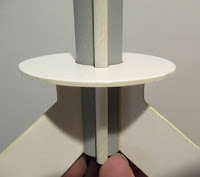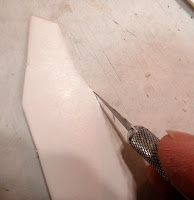This opened up responses on the Facebook Model Rocketry Fanatics page:
Roy Green
I’m not sure what they are talking about. Glassine is paper, not plastic. Are they actually talking about the colored tubes used in the ready- or almost-ready-to-fly rockets? I haven’t really noticed a major change* in glassine-covered tubes in decades. The company that makes them has changed ownership in the past few years but they are still made at the same plant.
My response:
I have opened up kits from the late 1960s and 70s, the tubes seem to be slightly more dense. Maybe there is a higher percentage of recycled fibers in recent tubes?
The original name of the tube making company was Euclid, now it is Paramount.
Rick Randol
As Roy said, glassine is paper. The tubes are made the same way and thickness that they’ve been for decades. I would guess the plastic goblin nose cone is actually an old mold that had a thinner plastic ring. They have been making them beefier in recent years. And, you’re right, the fins are not balsa. They have been substituting a different light wood as balsa becomes harder to get and more expensive. I forget the name of the wood.
My response:
Here's a link about weak nose cone tie rings: CLICK HERE
I thought it might be Tung wood, the same wood pressed to get Tung oil. At NARAM 60, I asked Bill Stine if Estes was using Tung wood, he said: "No, it's still Balsa."
Tung wood is native to China where the kits are bagged up. If you've ever seen the Sky Condor B/G kit (imported by Apogee), the glider is assembled from Tung wood, and it is light, but denser than some balsa.
Steve Thiemke
I suggest cutting the glassine off the tube from the area you need to glue the fin. No need to take it all off. Little tricks to try.
My response:
You could cut off a Glassine strip at the root edge areas on the thicker BT-55 and 60 tubes. I wouldn't recommend this on the thinner walled BT-5, 20 and 50 tubes. The Glassine wrap adds a lot of strength to the tube.




















































